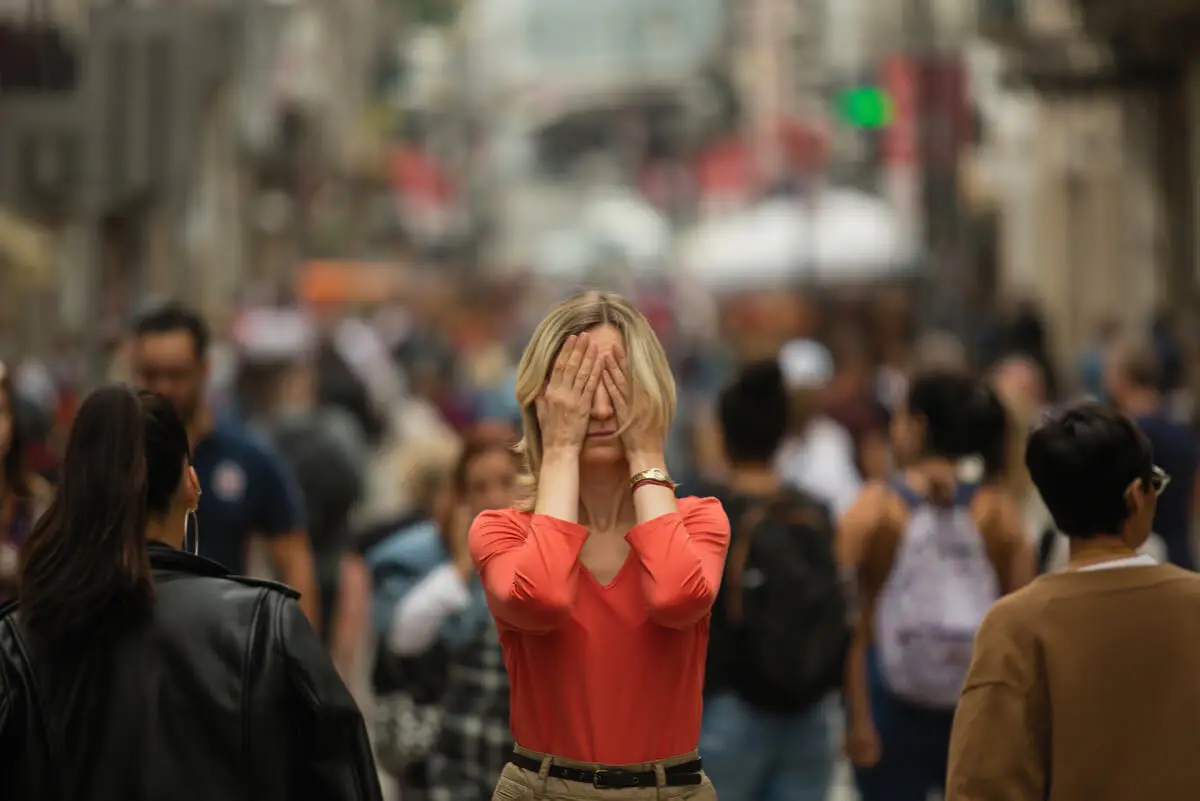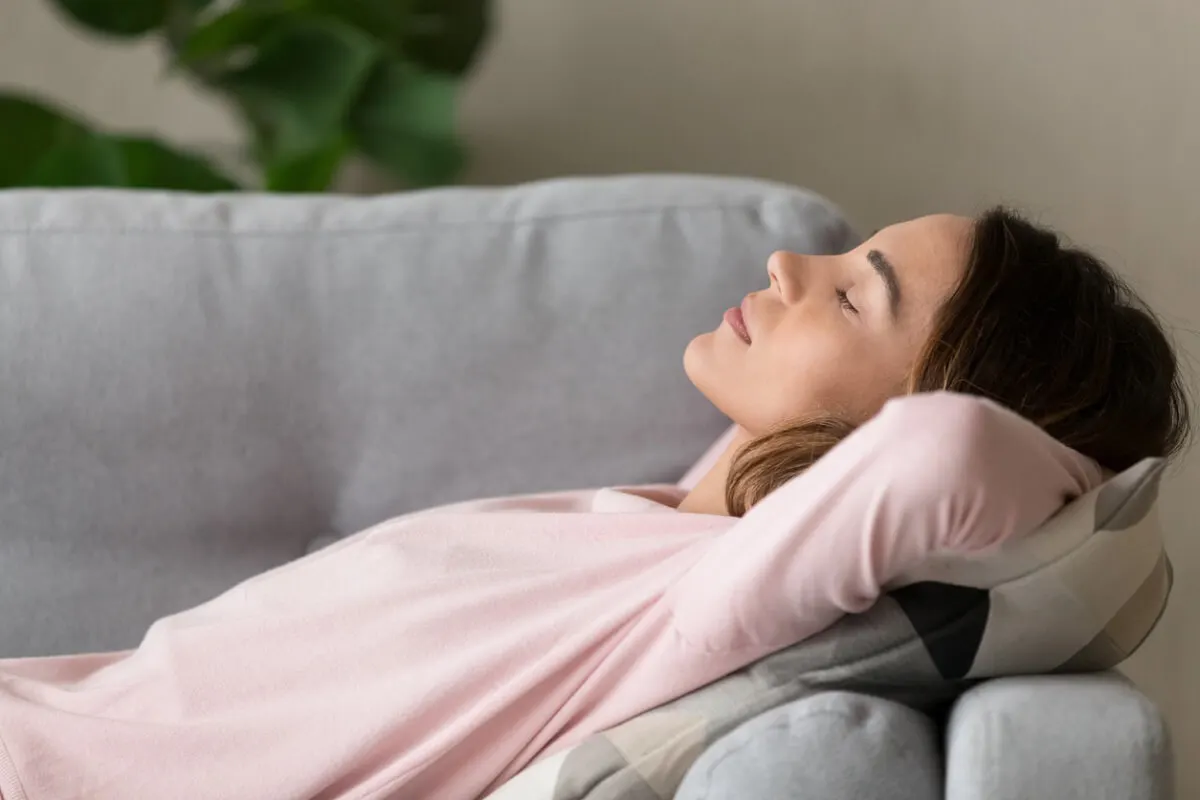Panic Attack vs. Anxiety Attack: Are They the Same Thing?


Written and verified by the psychologist Maria Fatima Seppi Vinuales
A panic attack always implies anxiety, but not every anxiety attack is expressed through a panic attack. It seems a play on words; however, it’s important to clarify each concept.
This is very relevant, especially for recognizing the signs through which each picture is presented and for providing resources to people who live with them or who consult in therapy. Let’s take a deeper look at the difference.
Panic and anxiety: Defining concepts
To be able to differentiate each one, it’s first key to establish some common bases. Panic refers to a sudden onset of intense fear. A panic attack may have triggers, or it may not. That is to say, it can appear with an environmental stimulus (for example, a trip on a bus), or it can be unexpected.
Anxiety is usually defined as anguish or worry about the future. In its right dose, it’s a necessary sensation, as it allows us to activate resources to face different demands. It becomes dysfunctional when it exceeds our response capacity, causes us discomfort, and prevents us from dealing with a situation.
It’s worth mentioning that there’s comorbidity between panic and anxiety attacks. This means that they can coexist.
How to identify a panic attack?
Some of the signs that allow us to identify a panic attack are the following:
- A choking sensation
- Intense fear of dying
- Tingling and numbness
- A sensation of depersonalization
- Fear of losing control or going crazy
- A need to escape or flee from the place
- Chest discomfort, increased heart rate, and palpitations
The signs mentioned are the most typical or differential signs. However, other sensations can also occur, such as nausea, dizziness, and sweating.

Some keys to dealing with a panic attack
A panic attack is usually followed by the fear of having another attack, so people tend to avoid those situations in which they experienced the first episode. For example, if it happened in a theater, they may avoid going there in the future. However, this behavior only reinforces the fear and magnifies the problem.
When dealing with panic attacks, it’s very important to carry out psychoeducation, which means explaining to the person the cycle of the panic attack and what is happening so that he/she can understand what is happening. Even addressing all the myths and beliefs that exist around the panic attack is healthy.
For example, people often believe that they’re going to die of a heart attack because of the way their heart beats during one of these attacks. However, this is not the case. The racing heart is a defense response to that situation that presents itself as threatening. With reliable information, a person will be able to follow or give themselves some self-instructions to help restore their sense of calm.
Practicing breathing techniques is also often helpful, so it’s advisable to train them beforehand. If possible, the person is usually instructed to lie down on the floor or on a comfortable surface that allows him/her to experience a feeling of containment and rest. Gradually, the body and mind return to calm.
How to identify an anxiety attack?
Anxiety is related to a feeling of alertness, worry, and unease that’s excessive and persistent. The person finds it very difficult to control.
The fact that it’s excessive refers to the fact that what is perceived as worrying or threatening is disproportionate to reality. It’s more than it seems.
Some questions that can help you to detect if you are suffering from anxiety are the following:
- Do you find it very difficult to relax?
- Do you feel anxious most of the time?
- Do you find it very difficult to stop worrying?
- Do you feel tired most of the time?
- Are the way you feel and the intensity with which you experience it affecting your day-to-day life?
That is, among the many characteristics of anxiety states are the following symptoms:
- Fatigue
- Restlessness
- Irritable mood
- Sleep disturbance
- Hypervigilance and hypersensitivity to the environment
- Difficulty concentrating, having a blank mind, or relaxing
We think you may also enjoy reading this article: The Similarities and Differences between Philosophy and Psychology
Some keys to coping with anxiety
Overall, there are different measures that we can take to reduce anxiety:
- Exercise regularly
- Practice breathing techniques
- Eat a healthy diet
- Sleep at least 7 to 8 hours a day
- Avoid alcohol and drugs
- Use progressive muscle relaxation guides
- Reduce or avoid sugar and caffeine consumption
However, the detailed suggestions are just a starting point. The real key is to ask for help, talk about how you feel with friends or family, and make a consultation with a professional if you consider it necessary.

The differences between a panic attack and an anxiety attack
Now that we’ve identified what each attack is about, we can more easily recognize their differences. One of them has to do with intensity, time, and duration.
A panic attack occurs in bursts, is abrupt, occurs suddenly, escalates very quickly, and is experienced with great intensity. People often report shortness of breath and fear of dying.
However, panic has a limited duration, although it’s experienced as if it were eternal. It tends to reach its peak quickly, in 10 minutes or less.
We can’t constantly remain in a panic attack (although we can have several a day), but we can be continuously and chronically in a state of anxiety. Regarding the frequency of panic attacks, if they’re recurrent, they can become a panic disorder.
It’s also necessary to know that apanic attack comes out of nowhere; it is abrupt. On the other hand, anxiety comes from before, it feeds back, and it comes back again and again on the same subject. This is what makes it go in crescendo.
Like this article? You may also like to read: The Main Psychological Effects of Multitasking and How to Avoid Them
Panic and anxiety are frequent types of discomfort, but we shouldn’t get used to them
Both panic attacks and anxiety attacks are fed by different reasons, and the world we live in today is no stranger to them. The demands and pressures that we experience nowadays push us to a frenetic pace that’s very difficult to stop.
However, we should never normalize this lifestyle and the consequences we pay for with lack of well-being. It’s important to take breaks, relieve stress, and dedicate time to leisure and rest.
Getting there first doesn’t always mean getting there better.
All cited sources were thoroughly reviewed by our team to ensure their quality, reliability, currency, and validity. The bibliography of this article was considered reliable and of academic or scientific accuracy.
- Raone, M. F., & Zanassi, S. R. (2016). Antecedentes y revisión crítica del denominado” Ataque de pánico”. Perspectivas en Psicología: Revista de Psicología y Ciencias Afines, 13(2), 57-66.
- Bados López, A. (2017). Trastorno de ansiedad generalizada: Naturaleza, evaluación y tratamiento (2017).
- Orozco, W. N., & Baldares, M. J. V. (2012). Trastornos de ansiedad: revisión dirigida para atención primaria. Revista médica de costa rica y Centroamérica, 69(604), 497-507.
This text is provided for informational purposes only and does not replace consultation with a professional. If in doubt, consult your specialist.








